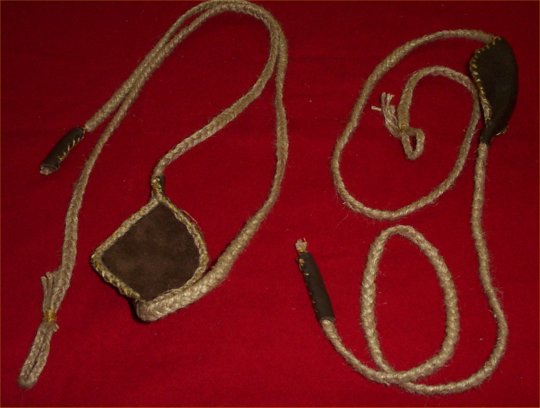The Contus
In earlier times, the Romans used a spear called a Hasta, which was essentially a copy of the Greek Dory. In the Principate these were primarily carried by Auxilia and by cavalry, but as the more traditional Legionnaire was phased out in the 3rd century, they were phased out by a longer, 8 foot infantry spear called the Contus. The Contus could range from about 7 to 12 feet, with anything over 8 to 9 feet typically being too unwieldy for an infantryman, and more suitable for cavalrymen. They usually had ash shafts, and had a leaf-bladed, or sometimes a long pyramidal tip.
Generally speaking, it is easier to order the metal parts, some rivets, and an 8-foot 1 inch diameter ash shaft to make your own. However, there are a few places where you can buy it pre-assembled.
CUSTOM ORDER - BLACKSMITH:
Robert Wimmers - Dutch blacksmith, makes spearheads and javelin heads. Good for European customers!
The Spiculum and Angon
The Spiculum was the late Roman Pilum, but it had a barbed head and had a shorter iron shaft, about 30-60 cm in length. This was a mainstay for Roman infantry, and could be used as a heavy javelin or as a spear. The Germanic Angon had been copied from the Pilum some time around the 1st Century AD, but didn't become common until the 3rd century AD. The Angon had a longer Iron shaft, around 60-90cm, and was generally longer than a Spiculum.
It is easy to make your own, ordering the metal parts and the rivets, along with a 6-foot ash shaft of 1 inch diameter. However, there are a few places you can buy one.
WHERE TO BUY:
Templ Armory - Sells a late 5th century Angon from Inzing-Hartkirchen. Good for Germanic impressions. Expensive.
CUSTOM ORDER - BLACKSMITH:
The Plumbata or Mattiobarbulus
The Plumbata or Mattiobarbulus was a 2-foot lead weighted throwing dart that came in use around the late 3rd century AD, and quickly dominated the battlefield as the replacement for light javelins like the Verrutum and Lancaea. A legionnaire could clip these to the back of his shield or carry them in a quiver on the side, and usually had around 5. You can buy a set of five from Deepeeka, or buy the parts and make your own, which is rather easy to do.
CUSTOM ORDER - BLACKSMITHS:
DO IT YOURSELF:
Comitatus Plumbata Guide - A guide to making Plumbata from the Comitatus reenactment group.
Fectio Plumbata Guide - A guide to making plumbata from the Fectio reenactment group.
The Lancea and Verrutum
The Lancea and Verruta were two different names for the same javelin in the late Roman era. These javelins were usually used by specialist units like the Lanciarii and by light skirmishers. These javelins are characterized by their shorter length and typically barbed, leaf-bladed, trilobate, or pyramidal heads. These are very easy to make on your own using some 3/4 oak dowel, between 3 and 4 foot long. The metal fixtures you will have to custom order.
CUSTOM ORDER - BLACKSMITHS:
The Funditum
WHERE TO BUY:
Soul of the Warrior - Sells a hand made leather and rope sling.

